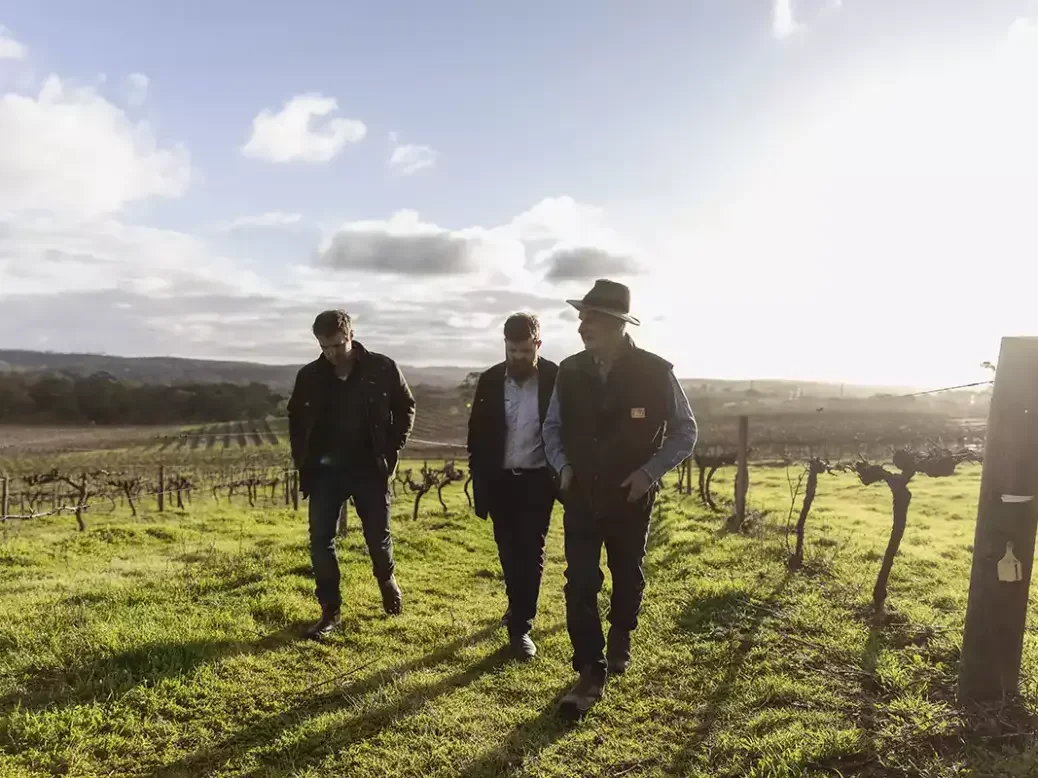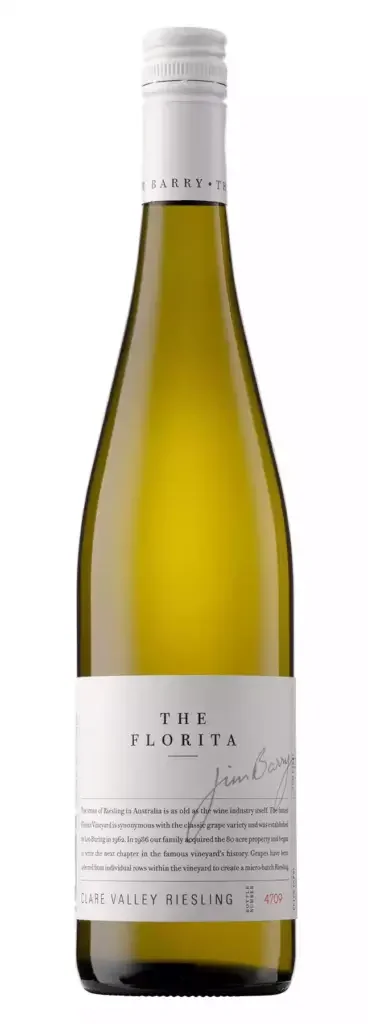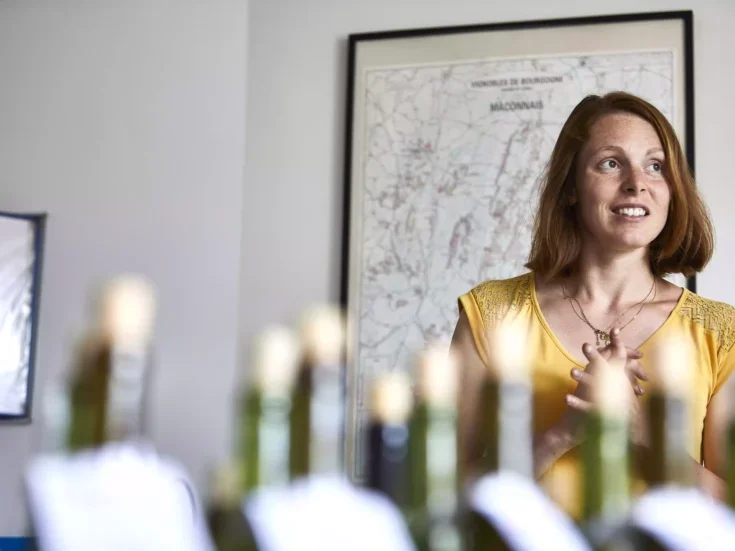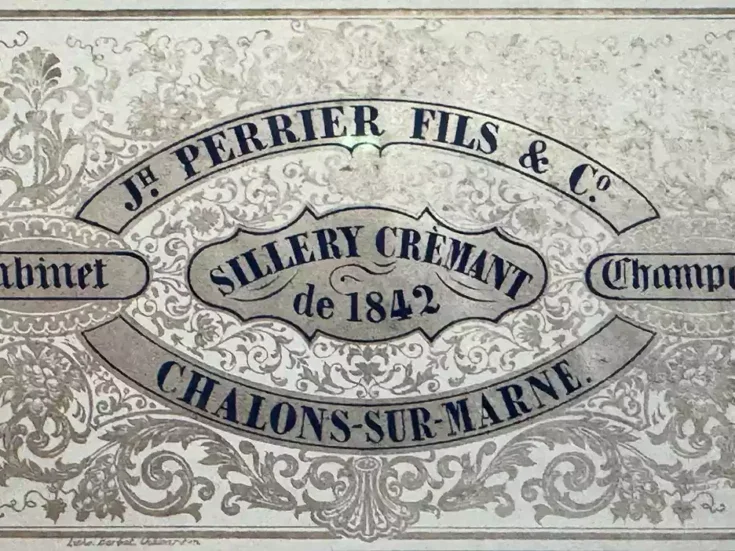
To complement Ken Gargett’s magisterial two-part survey of Australian Riesling published on worldoffinewine.com this week, we have returned to an article first published in WFW68 in June 2020, in which Sarah Ahmed reported from the Barry family’s 60th-anniversary Clare Valley Riesling tasting, which included some of the last remaining bottles from the 1970s, and which proved to be an impressive demonstration of the longevity and quality of Jim Barry Riesling.
Australian Riesling: An underrated, pristine joy
Australian Riesling: The regions, producers, and wines
Modest and perspicacious, Jim Barry (1925–2004)—Clare Valley’s first (and Australia’s 17th) enology graduate—remarked, “Sometimes it takes longer than a lifetime to do a lifetime’s work […]. It’s now up to my children.” And grandchildren. His eponymous label was the first to boast three generations to graduate from Adelaide’s acclaimed Roseworthy/Waite School of Oenology (Jim, Peter, then Tom), and the milestones keep coming. Today, Jim Barry Wines is Australia’s market leader for Riesling in sales volume, value, and vineyard area, with 160ha (400 acres), no less.
A diamond anniversary
Playing the long game is not only a family trait at Jim Barry Wines. Last September, Jim’s grandson Sam (director of sales and marketing) resoundingly reinforced the staying power of Jim Barry Wines’ Rieslings with a 60th-anniversary tasting across five decades, showcasing the grape that “fascinated” his grandfather. From the Barrys’ museum, this rare vertical included some of the last remaining bottles from the ’70s. With an eye to the future, Jim’s son, managing director Peter, has held back stock since 1989 and, from 2012, 30–50 percent of The Florita, Jim Barry Wines’ flagship Riesling, has been laid down for rerelease after a minimum of seven years. Going further still, in 2023, Jim Barry Wines will launch two new single-block Rieslings from its Lodge Hill vineyard with ten years’ bottle age.
The teardrop explodes
It is a shrewd move when some find Australia’s classic bone-dry Riesling style too austere. As the vertical illustrated, the rewards of patience are many; Clare Valley Riesling reveals greater complexity, texture, and palate-weight in its dotage—qualities that make this style an each-way bet and versatile dining companion. Youthful, vividly acid-etched Riesling—bottled electricity—is perfect with Coffin Bay oysters and a squeeze of lime when, says Sam, “it doesn’t have a lot of flavor but is much more delicate and mineral.” Conversely, King George whiting with a lemon butter sauce is a classic match when, at eight to 12 years old, Clare Valley Riesling hits a sweet spot and, he enthuses, “the fruit fleshes out and the palate resembles a teardrop, with generosity in the mid-palate, then acidity pulling the wine tight toward the end of the palate.” Older still, with more pungency and savory toast, yet still with cleansing acidity, mature Riesling can handle garlicky dishes, like chicken Kiev, with aplomb.
Onward, upward
As museum stock has been steadily evolving in bottle over the decades, so have Riesling grape-growing and winemaking practices at Jim Barry Wines. Both wines from the 1970s came from the clay-based soils of the original Watervale vineyard, which Jim Barry planted in 1964. Old-school Rieslings from the ’70s and ’80s would have had around 10g/l residual sugar, which rounded out the gracefully balanced 1974, reminding me of another terrific Jim Barry Watervale Riesling from that decade—the 1977 (tasted on previous occasions). Incidentally, following a pendulum swing to bone-dry for Jim Barry Wines’ entry-level Watervale Riesling, doubling the residual sugar to 4g/l around ten years ago has produced double-digit sales growth. This deft touch “gives the perception of more fruit and flavor, without the perception of sweetness,” observed Sam. Deservedly popular, it remains a great buy.
Cool slate: Lodge Hill
Two of the 17 Clare Valley vineyards (320ha [790 acres]) amassed since 1964—jewels in the crown—produce Jim Barry’s top-tier Rieslings. In 1977, convinced that it would “produce some of the best Riesling in the Clare Valley,” Jim acquired Wolta Wolta, a 133ha (329-acre) horse stud in the Polish River Valley. Located on the eastern ranges’ poor slate-dominated soils, it rises to almost 500m (1,640ft) in the south, where Jim planted Riesling in 1979. Lodge Hill is the cooler site (though it ripens earlier due to its low yields), giving wines that are clipped, focused, and mineral in youth. The tasting featured both vintages from the 1980s. Persistent, they were still very much alive and, like all save the first Riesling, delivered pleasure even on returning to the glass at the end of the tasting.
Grand cru: The Florita
While Lodge Hill was a virgin site, The Florita vineyard’s reputation for “grand cru” Riesling preceded it. Located on primarily loam topsoil over calcareous siltstone, this rolling vineyard (well protected from frost) was initially the source of Leo Buring’s Watervale Rieslings of the 1960s and ’70s. Famously cellarworthy, they were made by industry legend and “godfather” of Australian Riesling, John Vickery, who replaced old “sherry” varieties like Palomino with Riesling in 1962. When the opportunity to pluck The Florita (Spanish for “little flower”) came at auction in 1986, Jim’s sons Peter, Mark, and John argued that it was too good to miss—despite, divulged Sam, the family being “leveraged up to eyeballs” following the purchase of Lodge Hill (whose sizable vineyard the Barrys have only recently finished planting). Hang the recession’s giddy 20 percent interest rates and Lindemans (the owners) hanging onto The Florita trademark (which they objected to being used, even on back labels). Playing the long game, Peter Barry pounced when Lindemans omitted to reregister the trademark in 2004. That year, Jim Barry’s iconic micro-batch Riesling, The Florita, was born.
From individual rows of the 30ha (75-acre) Watervale vineyard, typically The Florita comes from block 26, which is 2ha (5 acres) of the oldest Riesling. Here, the terra rossa and loam barely cover the deep limestone beneath (though in drier years like 2007, blocks with more clay are preferred). Hand-pruned to 40 buds per vine, the average yield for block 26 is a measly 20hl/ha, thanks also to an early press cut—at about 400 liters per ton, The Florita is made from the finest free-run juice. (The rest of the vineyard, which contributes to Jim Barry Watervale Riesling, runs at about 30–35hl/ha.) All of this explains the impressive intensity and structure, which, Sam reckoned (and the vertical supports), should allow The Florita to age well for 30 years.
Floral and chalky, true to its Watervale roots, The Florita has great perfume and limpidity, despite the concentration—
a delicacy that has been enhanced over the past decade or so thanks to slightly earlier picking dates, more handpicking, and the deployment of clay-based sprays and improved canopy management for sun protection. Bottling under screwcap since 2000 has paid dividends in terms of freshness and consistency; it has also dispensed with ascorbic acid, an oxygen scavenger that darkens wine over time (the 1988 and 1992 Rieslings being cases in point).
The future
Riesling’s site expressiveness has encouraged the Barrys to acquire new Riesling vineyards, including McKay’s and Churinga in Watervale and Morrison’s vineyard in Penwortham, the highest of them all. Having worked the vintage in the Mosel with Ernst Loosen in 2015, Tom Barry has also diversified the range, introducing more textural, opulent styles, culminating in this year’s release of two collaborative wines. Walhalla Riesling 2016 is from Loosen’s Erderner Treppechen Mosel vineyard, but made protectively the Australian way, in stainless steel, with cultured yeast and low residual sugar. Conversely, Wolta Wolta Riesling 2017 is from Lodge Hill, but naturally fermented and lees-aged in German oak fuder, with 7g/l residual sugar, it is modeled on Germany’s Grosses Gewächs style. Ever innovative, Jim Barry Wines has also pioneered Assyrtiko, the Greek grape, in Australia—but make no mistake, the family remains in thrall to Riesling, as were the lucky few who attended this rare vertical.
Tasting Jim Barry Riesling

Jim Barry St Clare Riesling 1972
(Watervale, Clare Valley; 12.5% ABV)
Like the 1974, this is from a Watervale vineyard planted on clay by Jim Barry in 1964. The bronze hue, and the tufa and bone-meal to the nose, are discouraging, but there are signs of life—discernible acidity and dried honey sweetness, which follow through on the palate, with a touch of buttermint and, opening up, baked peach. But, unlike the “white noise” of tufa and bone-meal, their presence is intermittent. Drying out; the best of a bad bunch of the remaining bottles. | 82
Jim Barry Watervale Riesling 1974
(Watervale, Clare Valley)
A memorable vintage for all the wrong reasons: the first known outbreak of downy mildew. Yet this is a truly memorable wine, thanks to Jim Barry’s technical bent; having read about downy mildew, Clare Valley’s first qualified winemaker sprayed the vines. Insinuating, very graceful, with integrated acidity, potpourri, pith, saline, and barley-sugar notes. A deft touch of residual sugar delicately rounds out and extends the palate. An hour later, hints of buttermint, saffron-edged peach, and amaretto biscuits emerge. Lovely intensity and balance. | 94
Jim Barry Lodge Hill Riesling 1986
(Polish Hill River Valley, Clare Valley)
Purchased in 1977 and planted to Riesling in 1979, the Lodge Hill vineyard is perched at just under 500m (1,640ft). Elevation and this subregion’s “hard-rock” soils (shallow brown loam over a layer of clay and slate bedrock up to a million years old) typically create tighter wines. Saffron yellow/gold, with searing aromas of salted limes, honey, and a hint of potpourri. Maintains its line but, with this much age, is yielding, too, revealing honeyed peach with time in glass. Lovely persistence. | 92
Jim Barry Lodge Hill Riesling 1988
(Polish Hill River Valley, Clare Valley)
Antique gold. Pan-fried smoky spices, pith, and herbal notes to the nose and the attack. Pungent almost, but for the mellowing honey and the burst of juicy, grapefruity acidity, which opens up the mid-palate, lending impetus, clarity, and layers. Lingering and intense on the finish, with salted limes, anise, eucalyptus, and burned honey. | 92
Jim Barry Watervale Riesling 1992
(Watervale, Clare Valley)
Near-amber hue, with spicy citrus pith, buttermint, and eucalyptus honey to the nose. A wandering palate reveals baggy, moldy orange, salted lime, and peach kernel, with an attenuated biscuit-like quality (incipient bone-meal) to the palate. Low on pleasure. | 84
Jim Barry Watervale Riesling 2002 (Watervale, Clare Valley; 13.5% ABV; 1.7g/l RS; pH 3.05; TA 7.4g/l)
The shift to screwcap and a very cool, highly regarded vintage combine to produce a stunning, markedly youthful yellow/straw wine. Ebullient classic lime-shred on toast, with honey to both nose and palate. Rolling, ripe grapefruity acidity brings great length, line, and layers; lightly pithy, chalky dry extract anchors lifted kaffir lime and lime oil on a resonating finish. | 96
Jim Barry Watervale Riesling 2004
(Watervale, Clare Valley; 12.5% ABV; 2.5g/l RS; pH 3.15; TA 7.7g/l)
A warm year, producing ripe, generous wines. Yellow-gold, with a lovely tingle of freshness to the nose, with lime juice, kaffir lime, and mature lime cordial notes, too. The concentration of the vintage makes for a firm, drier-seeming attack, but the generosity of the year unfolds going through. Rippling acidity produces a long cascade of flavors, citrus and mineral, the finish intense, honeyed, and toasty. | 93
Jim Barry The Florita Riesling 2004
(Watervale, Clare Valley; 13% ABV; 0.7g/l RS; pH 3.99; TA 7.4g/l)
The first vintage to be labeled after the vineyard, and most worthy of the moniker. Perfumed and pithily textured, with pink grapefruit, pronounced chalky minerality, and, opening up, lime cordial and incipient honey. Thoroughly delicious, with mille-feuille multiplicity and delicacy to its layers. Highly expressive, it is in a great drinking window now but will keep for several years yet. | 95
Jim Barry The Florita Riesling 2005
(Watervale, Clare Valley; 13.5% ABV; 0.99g/l RS; pH 3.01; TA 7.5g/l)
A very good vintage: Warm days, and cool nights produced wines with ripeness but also great finesse. A touch deeper in color and fruit than the 2004; more textural, too, its lime, peach, and green-mango fruit delicately sheathed in honey. Seamless but insistent acidity pushes out a long, penetrating finish, with marked quinine minerality, a lick of salt, and, with time in glass, classic toast. | 95
Jim Barry The Florita Riesling 2007(Watervale, Clare Valley; 13.3% ABV; 1g/l RS; pH 2.93; TA 8.2g/l)
Golden yellow. Broader, more forward, reflecting the dry, warm, low-yielding year, with lashings of lemon-butter on toast, lime cordial, and lime-oil aromatics. Pithily textured, honeyed and peachy going back. Punchy acidity keeps the flavors in play. Not the finesse of the best vintages but still satisfying. | 92
Jim Barry The Florita Riesling 2008
(Watervale, Clare Valley; 11.5% ABV; 2.5g/l RS; pH 2.88; TA 6.2g/l)
A challenging dry year; a cool February allowed for excellent flavor development and acid retention. Youthfully pale straw in hue but quite flat on the palate in terms of freshness and intensity (perhaps reflecting the relatively low alcohol/flavor development and total acidity?). Reveals geranium, rosewater, and succulent, round litchi; atypical wandering, muted finish. | 86
Jim Barry The Florita Riesling 2009 (Watervale, Clare Valley; 12.1% ABV; 2.3g/l RS; pH 2.93; TA 6.8g/l)
Following a cool, even summer, a January heatwave advanced the ripening cycle; cooler conditions prevailed during harvest. Rich, concentrated and honeyed on the attack, with lemon and lime curd, lime oil, toast and an undertow of quinine minerality. A swan-like paddle of acidity and pithy, spicy texture makes for a controlled, stately delivery. Generous but balanced, with attractive mouthfeel and length. | 93
Jim Barry The Florita Riesling 2010 (Watervale, Clare Valley; 12.4% ABV; 2.5g/l RS; pH 2.99; TA 6.7g/l)
A hot, dry summer and November heatwave resulted in an early year, with warm days and mild evenings throughout the vintage. Tertiary lemon curd, lime oil, and tufa are developing but, all in all, aromatically quite restrained. The citric bite and persistence on the palate suggest it may still be knitting together. | 88+
Jim Barry The Florita Riesling 2011 (Watervale, Clare Valley; 13% ABV; 2.5g/l RS; pH 3.01; TA 7.2g/l)
Described by the Barrys as a “very wet ‘European’ vintage, with a cold summer and harvest, and botrytis. Finer-framed, more restrained than usual, with delicate celery and chalky minerality on the nose and attack. Fresh lime—a suggestion of sweetness—builds in intensity going through, with subtle hints of pith, lime cordial, and toast to the finish. Promising; needs time. | 93+
Jim Barry The Florita Riesling 2012 (Watervale, Clare Valley; 12.3% ABV; 3.5g/l RS; pH 3.00; TA 6.9g/l)
A mild year has produced a pale, restrained, mineral Riesling, with celery salt, quinine, grapefruit, and lime, with hints of rose petal and litchi. Understated but complex and lingering, with an oyster-shell finish. | 93+
Jim Barry The Florita Riesling 2013 (Watervale, Clare Valley; 12.1% ABV; 2.4g/l RS; pH 2.9; TA 7.7g/l)
Spring rains in December, followed by warm, dry conditions during the harvest. Very classic, with dynamic, punchy acidity, dusty chalk, and concentrated lime—juice, flesh, pith, and oil. Tightly coiled going through, with a rapier-like, lip-smacking, saline finish and pronounced quinine minerality. Young and exceptionally persistent. | 95+
Jim Barry The Florita Riesling 2014
(Watervale, Clare Valley; 12.1% ABV; 2.4g/l RS; pH 2.9; TA 7.3g/l)
A hot, dry summer, relieved by early February rainfall (4in [100mm]), which delayed the harvest. From magnum, the 2014 is youthfully delicate, with floral lift and chalk-dust nuances. Concentrated, fresh, focused lime meets succulent, soft-focus litchi on the palate. The fruit tapers on an exceptionally precise but delicate, gossamer-like finish, underscored with quinine, chalk, and oyster shell. Terrific. | 96
Jim Barry The Florita Riesling 2015 (Watervale, Clare Valley; 12.4% ABV; 2.4g/l RS; pH 2.9; TA 8.1g/l)
An early, compressed vintage. Tightly focused and youthfully punchy. Concentrated fresh lime cleaves to a firm backbone of racy acidity. Fleeting notes of celery salt, chalk dust, and quinine chime in going through. Promising; keep. | 94+
Jim Barry The Florita Riesling 2016 (Watervale, Clare Valley; 11.3% ABV; 2.8g/l RS; pH 2.8; TA 7.5g/l)
A hot January led to a compressed vintage. Concentrated lime, so tightly grasped, you can almost hear the pips squeak. An exceptionally mineral-sluiced, quinine palate is precise, with sorbet-like coolness and clarity. Lovely balance and arrow-straight, unrelenting flow. A keeper. | 96+
Jim Barry The Florita Riesling 2017 (Watervale, Clare Valley; 12.5% ABV; 2.4g/l RS; pH 2.95; TA 7.9g/l)
A cool vintage, similar to 2002, with long hang-time. An expressive whirlwind of flavors, with delicate florals, and celery-salt and grassy nuances to the grapefruit-driven, well-focused palate. Pops of lemon sherbert, litchi, and green mango chime in on a vivacious finish. | 95+






